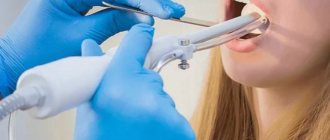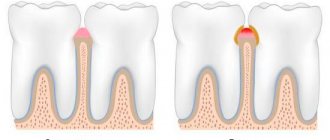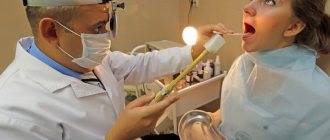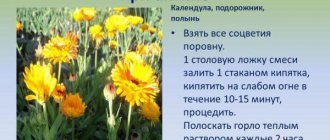What is tonsillectomy?
Removal of palatine tonsils is one of the most common operations in the practice of an ENT doctor.
Many people think that it is performed only for children, but this is not so. Adults may also need it if chronic tonsillitis has become severe and is accompanied by purulent complications, and enlarged tonsils interfere with swallowing and even breathing, causing sleep apnea syndrome - a short-term cessation of breathing during sleep. The palatine tonsils sometimes become inflamed. Inflammation of the tonsils (tonsils) is referred to as tonsillitis. It, in turn, can be acute and chronic.
Inflammation of the tonsils. Photo: James Heilman, MD / (Creative Commons Attribution-Share Alike 3.0 Unported license)
Acute tonsillitis is called tonsillitis. With chronic tonsillitis, the inflammatory process lasts for years, with periodic exacerbations. An exacerbation is usually accompanied by fever, sore throat and sore throat, including when swallowing.
The tonsils become coated, bad breath appears, and the cervical lymph nodes become enlarged. If exacerbations recur one after another, and conservative treatment does not help, you have to resort to surgical treatment - removal of the tonsils (tonsillectomy).
Operation options
Most often, a bilateral tonsillectomy is performed, that is, complete bilateral removal of the tonsils. How is tonsil removal done? There are several variations in how the operation is performed.
The classic type of operation is mechanical removal using a scalpel, a special loop and surgical scissors. This is a radical way to get rid of chronic tonsillitis. Recovery after surgery is long and quite painful. Another disadvantage of this operation is the high likelihood of bleeding.
Currently, classical surgery is being replaced by microinvasive tonsillectomy, which is much easier to tolerate by patients, avoids heavy blood loss and makes it easier to recover from surgery. There are several modern methods for removing tonsils.
- Laser tonsillectomy. How is laser tonsillectomy performed? Under the influence of laser radiation on the lymphoid tissue of the tonsil, liquid evaporates from it, and the vessels are coagulated (cauterized), which avoids bleeding. The patient does not experience pain. The wound at the site of the removed tonsil heals quickly enough, so the patient’s recovery is quick and easy. The downside of this operation is the heating of healthy tissue, which can lead to burns.
- Radio wave method. How is tonsillectomy performed using the radio wave method? Under the influence of a radio wave created by the Surgitron or Fotek surgical apparatus, the liquid from the tonsil tissue is evaporated. The operation is bloodless and does not damage healthy tissue. Swelling after surgery disappears quickly enough, and the patient recovers easily.
- Ultrasonic removal is carried out using an ultrasonic scalpel, which heats and destroys the affected tissue. This is a low-traumatic, safe method of removal. Thanks to the effects of ultrasound, tissue regeneration proceeds faster.
- Cryodestruction. During this procedure, the tonsils are exposed to low temperature, the source of which is liquid nitrogen. After this, the inflamed tissue is rejected. This is the most non-traumatic, bloodless method of removal. It does not require special postoperative care, is carried out quickly and is very easily tolerated by patients.
- Coblation is the effect of cold plasma on the tonsils. The operation is performed using a special device that converts electricity into plasma. The plasma flow does not burn healthy tissue. The recovery period after coblation is the shortest and most painless of all removal methods. The disadvantage of the operation is its price and low prevalence. Few medical institutions offer this service.
When deciding on an operation, the ENT doctor will definitely explain all the pros and cons of each type of surgical intervention and give recommendations on what is best to choose in a particular case.
Many patients before tonsillectomy ask the question: “What is the danger of removing tonsils?” Possible complications after surgery include the likelihood of relapse if tonsil tissue is not completely removed; the likelihood of bleeding in the first hours after surgery and infection of the wound (more often in patients with weak immunity).
Difference from tonsillotomy
Along with tonsillectomy, there is another operation with a similar name - tonsillotomy, in which enlarged tonsils are removed not entirely, but partially (usually in children). The indication for such an operation is the hypertrophy of these tonsils, when they occupy the entire space from the anterior palatine arch to the midline of the pharynx. With tonsillotomy, only the “excess” of enlarged tonsils is removed, returning them to normal size. Tonsillotomy is less traumatic than radical removal of the tonsils, and allows you to preserve their protective functions.
Why doesn't conservative treatment help?
Due to immunodeficiency (congenital or acquired) or concomitant diseases that contribute to prolonged inflammatory processes (diabetes mellitus, chronic infection), conservative treatment of tonsillitis may be ineffective.
Important! Group A beta-hemolytic streptococcus can settle in the tonsils, which causes rheumatic damage to the heart, joints and kidneys. Removing the tonsils avoids these complications.
Other factors that complicate conservative treatment include smoking and alcohol abuse. For teachers, singers and actors, the risk factor is the need to talk long, loudly and a lot.
Indications for laser tonsil removal
The reason for removing affected tonsils is the presence of a serious threat to other organs. As a rule, removal of the tonsils is indicated for patients who suffer from tonsillitis more than four times a year, patients for whom non-surgical treatment has not given the desired results, patients with complications such as diseases of the heart, joints, and nervous system. Removal of the tonsils is necessary for patients who have suffered an acute rheumatic attack, as well as for people whose excessive enlargement of the tonsils due to the spread of lymphoid tissue causes breathing or swallowing problems.
At what age is surgery performed?
Surgical treatment may be recommended for adults and children over 8 years of age. By this time, the tonsils are fully formed. The palatine tonsils are an integral part of the pharyngeal ring - a group of tonsils (paired palatine and tubal, unpaired nasopharyngeal and lingual) - an important organ of local immunity of the nasopharynx and respiratory tract. Early removal of tonsils can contribute to the development of atopic diseases - allergic rhinitis or bronchial asthma. Such operations are usually not performed on children under three years of age, since they rarely have tonsillitis - the tonsils are too small.
Important! Tonsils can be removed no earlier than six months after polio vaccination.
Recovery period
The quality of the operation depends on the professionalism of the doctor. The laser is a sterile instrument that resists septic inflammation of tissues. Regeneration of the pharyngeal mucosa is restored within two to three weeks, in the absence of burns and extensive wounds. Typically, on the 7th day after laser tonsil removal, a postoperative examination is scheduled with the attending physician. To speed up healing, the patient is prescribed rinsing with a special composition. After tonsil removal, treatment with antibacterial drugs is usually not required. During the first 24 hours after laser treatment, the patient is allowed to drink only cool water. It is recommended to turn to a gentle diet of cool, smooth, soft dishes. It is not advisable to eat hard, spicy, fatty or hot foods. Smoking and drinking alcohol is strictly prohibited. After surgery, the patient should not freeze or be physically overloaded. It is advisable to undergo a course of immunity-strengthening treatment.
Contraindications
They can be absolute (excluding the possibility of tonsillectomy) and relative, when everything is postponed until the reasons preventing the operation are eliminated.
Absolute contraindications:
- diseases with increased bleeding: hemophilia, hemorrhagic diathesis, Werlhof's disease, agranulocytosis, leukemia;
- heart failure grade 2–3;
- acute infectious diseases and exacerbation of chronic ones;
- active form of tuberculosis;
- cirrhosis of the liver.
Relative contraindications:
- caries (before sanitation - dental prophylaxis of the oral cavity);
- inflammation of the gums;
- pustular diseases of the mouth and skin;
- ARVI and influenza;
- exacerbation (decompensation) of chronic diseases;
- menstruation;
- pregnancy after the 26th week due to the risk of premature birth.
Contraindications to laser intervention
Removal of tonsils with a laser is contraindicated for patients with cancer, diseases of the hematopoietic organs, blood clotting disorders, mental and nervous system disorders, and serious heart, liver and kidney diseases.
Manipulations to remove hypertrophied tonsils should be postponed during periods of exacerbation of acute infectious, viral and rheumatoid diseases, the active stage of tuberculosis, diabetes mellitus, hypertension and during female menstruation. In addition, tonsil removal is not performed on pregnant and lactating women and children under 10 years of age.
Types of tonsil removal surgeries
Classical
The surgeon installs a mouth retractor and separates the tonsil tissue along with the capsule from the surrounding tissues in a “blunt” way using a raspator. The bleeding is stopped, the vessels are cauterized with an electrocoagulator or laser. The whole process takes from 15 to 40 minutes.
Electrocoagulation
Figure 1. Incision at the base of the tonsil during electrocoagulation.
Source: Maxillofacial Plastic and Reconstructive Surgery / Open-i (Attribution 4.0 International) Instead of a scalpel, a high-frequency current electrode is used. The vessels are “sealed”, so blood loss is minimal. Recovery may take longer due to associated injuries to surrounding tissues.
Removed tonsils. Maxillofacial Plastic and Reconstructive Surgery / Open-i (Attribution 4.0 International)
Cryodestruction
Tonsils are frozen with liquid nitrogen. As a result, they become pale, flat and hard, and after a day they die and are gradually rejected. The method is recommended for patients with an increased risk of bleeding (thrombocytopenic purpura, hemophilia, etc.), severe heart failure and endocrine pathology.
Important! The cryosurgical method is used in a series of procedures lasting up to 1.5 months. During this time, a relapse of the disease is possible if not all of the tonsil tissue has been destroyed. Cryosurgery is used when classical surgery is not possible.
Ultrasonic destruction
High-frequency sound vibrations warm up the tissues to prevent bleeding. Unlike exposure to liquid nitrogen or electricity, surrounding tissue is almost not damaged. Ultrasound method is one of the least traumatic.
Radio wave destruction
A probe is installed inside the tonsils, which generates radio waves. They evaporate the water from here and cause scarring. Ablation can be repeated several times. Anesthesia is not needed here - only local anesthesia or light sedation. Recovery is quick, but radical tonsil removal is almost impossible. Therefore, radio wave therapy is used for their hypertrophy, but not for chronic tonsillitis, when radical intervention is required.
Cold plasma destruction
A relatively new method of removing tonsils. It is based on the property of cold plasma (radio frequency energy converted into ionic dissociation) to separate molecular bonds in tissues without releasing thermal energy. Plasma is called cold because it causes minimal heating of the tissue, which means that pain after surgery will be insignificant, recovery will be easy and quick. The method is low-traumatic and can be used for partial or complete removal of tonsils.
Laser removal
Laser tonsillectomy can be complete or partial (with cutting of the upper layers of the tonsils). Different types of laser are used - carbon, infrared, etc. Only pathological tissues are removed, and healthy ones are not affected. Other advantages include immediate separation of the tonsil from the underlying tissues with coagulation of blood vessels, which reduces the risk of bleeding and infection.
Lubricate the tonsils and oropharyngeal mucosa with medicines
Chronic tonsillitis, which is a long-term inflammatory process in the palatine tonsils, is one of the most pressing problems in pediatric otorhinolaryngology. This is due to the extremely important role of the tonsils in the formation of meChronic tonsillitis, which is a long-term inflammatory process in the palatine tonsils, is one of the most pressing problems in pediatric otorhinolaryngology. This is due to the extremely important role of the tonsils in the formation of mechanisms of specific and nonspecific defense of the child’s body during its growth. Chronic tonsillitis accounts for 4 to 9% of all diseases in children. In the group of frequently ill children, chronic tonsillitis accounts for 43%. The disease manifests itself as frequent sore throats in combination with general toxic-allergic phenomena:
- periodic rise in temperature;
- tonsillogenic intoxication;
- accompanied by weakness;
- periodic joint pain;
- periodic pain in the heart.
Among the complications of chronic tonsillitis, it is necessary to highlight lateral and retropharyngeal abscesses, as well as rheumatism, diseases of the urinary system, prostate gland, and meninges. Thus, chronic tonsillitis must be considered as a focal infection, the elimination of which is an extremely important part of the task of preserving the health of the child as a whole, as well as preventing diseases associated with chronic tonsillitis. Due to the empirical nature of prescribing antibacterial therapy and the widespread spread of resistant strains of the main pathogens in recent years, Currently, increasing importance is being given to the inclusion of locally active drugs in the treatment regimen. One of the promising areas is the prescription of drugs that combine antiseptic, anti-inflammatory and analgesic effects. The Ivex drug Stopangin meets these requirements. Stopangin is a combination drug that contains three main components: hexetidine, methyl salicylate and a complex of essential oils. The main active ingredient, hexetidine, has a wide range of pharmacological properties. Hexetidine has a bactericidal and bacteriostatic effect, and has an antifungal and antiviral effect. The drug is active against S. aureus, S.pyogenes, S.epidermidis, Clostridium perfringens, Mycobacterium tuberculosis, Escherichia coli, Klebsiella pneumoniae, Proteus vulgaris, Candida spp., Actinomyces spp., Trichophyton spp., Histoplasma capsulatum, etc. It is reported that strains with acquired resistance to antibiotics do not develop cross-resistance to hexetidine even with prolonged treatment with this drug for 5 months. In addition to being antimicrobial, hexetidine has a hemostatic and analgesic effect, which justifies its use after tonsillectomy. Unlike chlorhexidine, it is low-toxic and can therefore be prescribed to children. Methyl salicylate has analgesic and anti-inflammatory effects. Stopangin is available in the form of a spray and a solution for gargling. stopangin contains a complex of essential oils: anise, eucalyptus, sassafras, clove, peppermint oil. They have not only softening, but also antiseptic effects. In the department of ear, nose and throat diseases of the Federal State Institution MNIIPiDH Roszdrav, a study was conducted on the effectiveness of the drug stopangin in the treatment of chronic compensated tonsillitis (CCT) and chronic decompensated tonsillitis (CDT) in children in comparison with traditional therapy . During the study, the following tasks were solved: assessment of the anti-inflammatory and analgesic properties of the drug, both in the conservative treatment of chronic tonsillitis and after tonsillectomy, as well as the effect of stopangin on the pathogenic microflora of the pharynx before and after treatment. The study involved 51 patients aged 5 to 17 years: 31 of them with CCT and 20 patients with CDT after tonsillectomy. All children underwent a course of antibacterial therapy before hospitalization, some twice. The patient examination plan included a daily examination with an assessment of the dynamics of the condition of the pharyngeal mucosa and taking into account the patient’s subjective assessment of the severity of the pain syndrome on a visual analogue scale. All patients had their pharyngeal microflora examined before and after treatment. All patients were divided into two groups. Patients of the main group received treatment with Stopangin: the lacunae of the tonsils were washed with a solution of the drug 2 times a day (in patients after tonsillectomy, the oropharynx was rinsed), as well as the pharynx was irrigated with Stopangin spray 3 times a day. Patients in the control group received traditional therapy: washing the lacunae of the tonsils, rinsing the oropharynx with a solution of furatsilin or saline with the addition of eucalyptus tincture (1:10) and lubricating the pharynx with Lugol's solution. Children with HDT after tonsillectomy additionally had their throats irrigated with Cameton aerosol 3 times a day. The course of treatment lasted 7–8 days. All patients initially complained of sore and dry throat, pain when swallowing. 50% of children had symptoms of intoxication: weakness, fatigue, increased sweating, periodic rise in temperature to low-grade levels, “flying” pain in the joints. Pharyngoscopy revealed in most children severe hyperemia of the anterior palatine arches and hypertrophy of the tonsils from grades I to III, usually with purulent plugs in the lacunae. With pharyngitis, the clinical picture was complemented by thickening of the lateral ridges of the pharynx or the presence of lymphoid granules on the posterior wall of the pharynx. With tonsillomycosis, a characteristic white coating was present on the surface of the tonsils. All patients underwent a study of the microflora of the pharynx before starting treatment. In the first group, monoflora was sown in 4 patients; in the remaining 17, microorganisms were sown in association. In the second group, a monoculture was sown in 1 patient and an association of microorganisms was sown in 10 patients. The study demonstrated a higher therapeutic effectiveness of the drug Stopangin compared to traditional therapy. In patients with CCT who received stopangin, by the 2–3rd day of treatment, the disappearance of pain and discomfort in the throat was noted; on the 3–4th day, hyperemia of the pharynx mucosa disappeared and the lymphoid tissue of the tonsils was significantly reduced. A decrease or disappearance of plaque on the tonsils with tonsillomycosis was observed on days 5–6. In the control group of children with CCT, the above symptoms resolved 2–3 days later. In children with CCT (after tonsillectomy), with the use of stopangin, the pain syndrome resolved on the 3rd–4th day, by which time mucosal hyperemia and swelling of the arches also disappeared and uvula of the soft palate. On the 4th–5th day, the almond niches were cleared of plaque. None of the patients in this group had trismus of the masticatory muscles or tenderness of the submandibular lymph nodes. In the control group, after tonsillectomy, pain when swallowing persisted until the 5th–7th day; the tonsil niches were cleared of plaque by the 7th–9th day. In 4 out of 10 patients, trismus of the masticatory muscles and the phenomenon of submandibular lymphadenitis of varying degrees of severity were noted. Analysis of the microbial flora after treatment revealed the antibacterial effect of stopangin: in 70% of patients, after a course of treatment with the drug, normal flora was noted in smears from the throat, while in the group received traditional therapy, pathogenic bacteria were not identified in 55% of patients. In the stopangin treatment group, no side effects were detected. Most children noted the pleasant taste of the drug. The results of the study indicate the beneficial complex effect of the drug stopangin on children with chronic tonsillitis and after tonsillectomy.
- the use of the drug stopangin in children with chronic tonsillitis leads to a reduction in treatment time compared to traditional therapy due to the antiseptic and anti-inflammatory properties of the drug;
- the antimicrobial and antimycotic properties of the drug lead to faster disappearance of plaque and more effective sanitation of the oropharyngeal mucosa compared to traditional therapy;
- the use of stopangin can reduce the severity of pain in patients with chronic tonsillitis and children after tonsillectomy.
Postoperative period
Figure 2. Appearance of the throat after tonsillectomy. Source: James Heilman MD, CC BY-SA 3.0.
Recovery usually takes 3–4 weeks, the first of which takes place in the hospital. This is necessary in order to respond in time to the most common complication of tonsillectomy – pharyngeal bleeding. To prevent it, hemostatic drugs are prescribed.
From the operating room the patient is transferred to a ward under the supervision of the attending physician. On the first day, it is forbidden to swallow, spit or expectorate saliva. You can only breathe through your mouth. In case of severe pain, the patient is prescribed painkillers.
A diet is recommended for all days of the postoperative period
- on the first day, adults should refrain from eating, and small children should not eat or drink for the next 6 hours;
- In the first week after surgery, it is recommended to eat liquid, smooth food;
- During the recovery period, food should be soft; it is not recommended to eat too hot, cold, sour, or spicy. This may irritate the mucous membranes of the throat and mouth.
- In the postoperative period, if necessary, a course of antibiotics is prescribed.
Figure 3. Memo: what you can and cannot eat after surgery.
Source: verywellhealth.com Bed rest must be observed for 2 days. In most cases, the patient is discharged from the hospital within a week for outpatient observation and treatment.
Material and methods
The study was carried out in patients with chronic decompensated tonsillitis who were admitted to the Department of Otorhinolaryngology of the St. Petersburg State Medical University named after. acad. I.P. Pavlova for planned surgical treatment. Group 1 included 23 patients aged from 20 to 43 years, who in the postoperative period received NSAIDs (Ketorolac) on demand for pain, as well as a homeopathic monocomponent herbal preparation Arnica Montana C9 (BOIRON) 5 granules 3 times a day for resorption from the 2nd day. The second (control) group of patients included 20 patients aged 19 to 42 years who received only on-demand NSAID therapy (Fig. 1).
Rice. 1. Distribution of patients in groups by age. The two study groups of patients were balanced by gender and age, thus, the studied differences between them reflect the effect of the drug Arnica Montana C9 (BOIRON). All patients underwent classical bilateral tonsillectomy under general anesthesia by the same operating team. In the early postoperative period, a number of criteria were assessed in all patients: body temperature in the morning after waking up and in the evening, the need to use NSAIDs, the amount of their use per day, pain assessment according to VAS, as well as changes in the pharyngoscopic picture and neck lymphadenopathy within 10 days after surgery.
The results of the study were entered into the developed computer database on a personal computer using Microsoft Excel tables. Using the application package Statistica for Windows v.10.0, analysis and statistical processing of the obtained data were carried out, and the parameters of descriptive statistics were determined.
Quantitative indicators were checked for compliance with normal distribution using the Kolmogorov-Smirnov test. For quantitative data having a normal distribution, the arithmetic mean ( M
) and standard deviation (
SD
), which are presented in the format
M
(
SD
); when describing indicators that differ from the normal distribution, medians (Me) were used in the Me format (Q1; Q3) and the lower Q1 (25%) and upper Q3 (75%) quartiles were used as an interval estimate. Qualitative indicators of the study are presented in absolute and relative values (%).
To find differences between normally distributed indicators, t
-Student's t-test.
Formula t
-Student's test:
where M
1 - arithmetic mean of the 1st compared group,
M
2 - arithmetic mean of the 2nd compared group,
m
1 - mean error of the first arithmetic mean,
m2
- mean error of the second arithmetic mean.
Statistical processing of the study results in groups was carried out with determination of significance using the nonparametric Mann-Whitney U test.
Mann-Whitney U test formula:
where n
1 - the number of elements in the 1st sample,
n
2 - the number of elements in the 2nd sample, T
x
- the larger of the 2 rank sums,
nx
- the corresponding sample.
Indicators changing over time were analyzed using paired Student's t test (in the case of normal distribution) or using t
-Wilcoxon test.
To analyze qualitative indicators, the χ2 test with Yates' correction was used (in cases of absolute numbers less than 10); if it was impossible to use it, the Z-test was used for proportions with correction for end points.
The difference between groups was considered statistically significant at p
<0,05.
Complications after removal of tonsils
The most common of them is bleeding, which can develop both on the first day after the intervention (primary bleeding, and 5-6 days after it. The incidence of postoperative pharyngeal bleeding ranges, according to various observations, from up to almost 60%. Minor bleeding after removal of the tonsils is stopped using a tampon, electrocoagulation, or the anterior and posterior palatine arches are sutured together to reduce the area of bleeding.
Also, as a side effect of the procedure, there is a risk of blood aspiration (blood entering the respiratory tract). Then the blood is urgently removed with an electric suction and bronchoscopy is performed.
After removal of the tonsils, swelling of the soft palate and larynx is possible. If signs of difficulty breathing appear, decongestant therapy is carried out.
If the wound becomes inflamed after removal of the tonsils, antibiotic therapy is prescribed.
In most cases, the operation takes place without complications or side effects. If the patient experiences pain, the doctor will prescribe analgesics on the first day after removal of the tonsils, and then non-steroidal anti-inflammatory drugs.
Sometimes the patient may experience voice changes, taste disturbances, and nasal sounds.
It is extremely rare to experience damage to the temporomandibular joint due to forceful opening of the mouth with a mouth opener during tonsil removal.
Complications
Complications after tonsillectomy can be associated directly with mechanical effects (bleeding) and with the addition of infection.
Bleeding may occur during or immediately after surgery, or several days after surgery. According to various sources, this complication occurs in 2-10% of cases. In the early period, bleeding develops due to incorrectly chosen surgical tactics, concomitant diseases of the patient, and incorrect preparation for surgery. Secondary bleeding occurs during the rehabilitation period, when films and scabs begin to come off, most often due to active interference in this process. To avoid complications, careful preoperative preparation is necessary, compliance with all doctor’s recommendations - abolition of blood thinners before the procedure, a period of rest after surgery.
As a result of bacterial complications, in the first 5-7 days after tonsillectomy, the patient may develop purulent foci at the site of intervention, bronchitis, pneumonia, pleurisy, and lung abscess. Failure to maintain sterility during surgery carries the risk of developing septicemia - generalized damage to the body as a result of bacteria entering the blood. An important measure to prevent this complication is compliance with the rules of asepsis and antisepsis during surgery, medical supervision of the patient in the first few hours after the intervention, and following the doctor’s recommendations during the recovery period.
Sources
1. Palchun V.T.
Otorhinolaryngology: national guidelines. M.: GEOTAR-Media, 2016. 2. Karpishchenko S.A., Svistushkin S.M. Chronic tonsillitis and tonsillitis. Immunological and clinical aspects. St. Petersburg: Dialogue, 2017.
3. Lukan N.V., Sambulov V.I., Filatova E.V. Conservative treatment of various forms of chronic tonsillitis. Almanac of Clinical Medicine, 2010, 23: 37-41.
4. Belov, B.S., Shcherbakova M.Yu. A-streptococcal tonsillitis: modern aspects. Pediatrics. 2009, 88(5): 127-135.
5. Turovsky A.B, Kolbanova I.G. Chronic tonsillitis - modern concepts. Doctor.RU, 2009, 49(5): 16-21.








